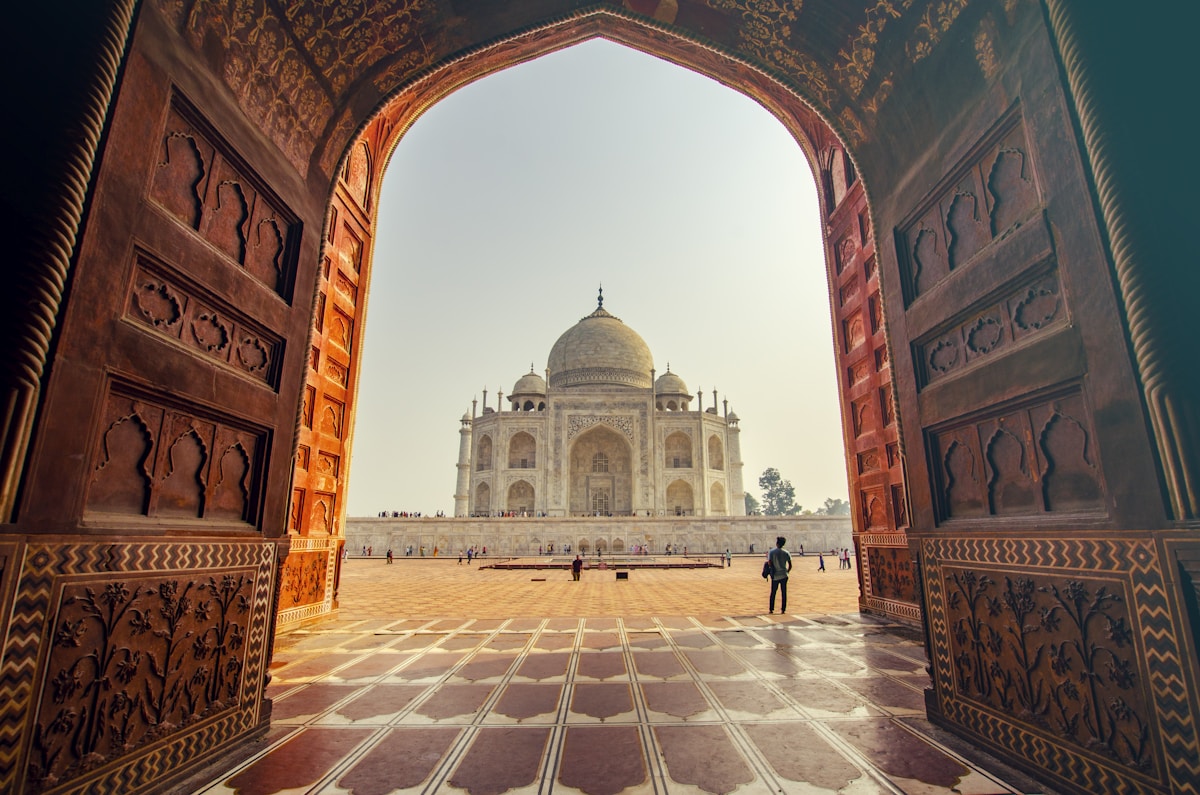Sydney's Buddhist temples tell the story of Australia's multicultural transformation. From Vietnamese pagodas in Cabramatta to Thai temples in Bonnyrigg, Chinese monasteries in the Blue Mountains to Japanese Zen centres in the city—Sydney offers one of the most diverse Buddhist landscapes outside Asia.
As a Vietnamese-Australian who arrived in Sydney decades ago, temples have been my spiritual anchor in a new country. They're places where cultural identity, religious practice, and community connection interweave. Whether you're Buddhist seeking a spiritual home, curious about Buddhist practice, or simply interested in Sydney's cultural diversity, the city's temples offer profound experiences.
Understanding Sydney's Buddhist Diversity
Sydney's Buddhist community reflects the diversity of Buddhist traditions across Asia. Unlike cities where one tradition dominates, Sydney has significant communities from nearly every major Buddhist country.
Vietnamese Buddhism (Mahayana): The largest Buddhist community in Sydney. Vietnamese temples practice Mahayana Buddhism mixed with Pure Land traditions, ancestor veneration, and Vietnamese cultural elements. They're concentrated in Cabramatta, Canley Heights, Bonnyrigg, and Fairfield.
Thai Buddhism (Theravada): Sydney has multiple Thai temples serving both Thai immigrants and Western practitioners. Theravada emphasizes individual enlightenment through meditation and monastic discipline. Temples offer meditation classes, Thai language lessons, and cultural events.
Chinese Buddhism (Mahayana/Chan): Chinese temples range from traditional community temples to large modern monasteries like Nan Tien Temple. They practice various Mahayana schools including Pure Land, Chan (Zen), and Humanistic Buddhism.
Tibetan Buddhism (Vajrayana): Several centres teach Tibetan Buddhist practices including meditation, philosophy, and ritual. They attract both Tibetan refugees and Western converts.
Japanese Zen: Smaller but influential, Japanese Zen centres focus on zazen (sitting meditation) and the austere aesthetic Zen is known for.
Major Sydney Buddhist Temples
Nan Tien Temple, Wollongong (90 minutes from Sydney)
The largest Buddhist temple in the Southern Hemisphere, Nan Tien Temple is architecturally stunning and spiritually significant. Built by the Fo Guang Shan order from Taiwan, it practices Humanistic Buddhism—emphasizing Buddhism's application to daily life rather than monastic withdrawal.
The main shrine hall is breathtaking. Multiple Buddha statues in gold, intricate ceiling details, and the sheer scale create genuine awe. The temple offers accommodation, vegetarian meals, meditation retreats, and cultural programs. Non-Buddhists are welcome to visit and learn.
Phuoc Hue Temple, Wetherill Park
One of Sydney's most significant Vietnamese Buddhist temples, Phuoc Hue serves as spiritual and cultural centre for Vietnamese-Australians. The temple architecture reflects traditional Vietnamese pagoda style with curved roofs, ornate decorations, and multiple Buddha statues.
Sunday mornings see hundreds of Vietnamese families attending ceremonies. The temple runs Vietnamese language classes, Buddhist education for children, and community events celebrating Vietnamese holidays. For Vietnamese-Australians, it's as much about cultural preservation as religious practice.
Wat Pa Buddharangsee, Leumeah
This Thai forest monastery follows the strict Theravada tradition. Monks live simply, meditate extensively, and maintain the disciplined lifestyle of forest monasteries in Thailand. The temple welcomes laypeople for meditation, dharma talks, and to make merit through offerings.
The contrast with more ornate temples is striking. The aesthetic is simpler, the practice more austere, the focus more intensely on meditation and renunciation. It offers insight into Theravada Buddhism's monastic heart.
Sydney Zen Centre, Alexandria
For those interested in Japanese Zen practice, Sydney Zen Centre offers an accessible introduction. Daily zazen sessions, weekend retreats, and dharma talks provide structured practice without requiring conversion or extensive commitment.
The minimalist aesthetic—simple meditation hall, few decorations, emphasis on direct experience—characterizes Zen approach. It's particularly popular with Western practitioners seeking meditation without elaborate ritual or cultural elements.
Visiting Buddhist Temples: Practical Guide
Appropriate Dress: Modest clothing covering shoulders and knees. Remove shoes before entering shrine halls. Some temples provide robes to cover shorts or sleeveless tops.
Behavior: Speak quietly, silence phones, don't point feet toward Buddha statues or monks. Photography policies vary—always ask permission. Temples are places of worship, not tourist attractions, so maintain respectful attitude.
Offerings: If you wish to make offerings, incense, flowers, or fruit are appropriate. Monetary donations support temple operations. Food offerings to monks must follow specific rules—temples can advise.
Services and Programs: Most temples offer meditation classes, dharma talks, and cultural events open to the public. Check temple websites or call ahead for schedules and whether English instruction is available.
Festivals: Buddhist festivals provide the most vibrant temple experiences. Vesak (Buddha's birthday), usually in May, is celebrated across all traditions. Vietnamese Tet (Lunar New Year) brings thousands to Vietnamese temples. Thai temples celebrate Songkran (Thai New Year). These festivals include ceremonies, vegetarian food, cultural performances, and community celebration.
Beyond Religious Practice: Temples as Community Centres
For immigrant communities, temples serve functions beyond religious worship. They're social centres where people speaking the same language gather, share news from home countries, maintain cultural traditions, and support each other through challenges of immigrant life.
Vietnamese temples, for instance, function as quasi-community centres. After Sunday services, people socialize over vegetarian lunch, children attend language classes, elderly people meet friends from their hometown, and families celebrate life events—birthdays, anniversaries, memorial services.
This social function matters enormously for maintaining cultural identity across generations. Second-generation Vietnamese-Australians who might not be deeply religious still attend temple for cultural connection and community belonging.
Meditation and Wellness Programs
Many Sydney temples offer meditation instruction to the public. These programs range from single classes to extended retreats, from beginner-friendly to advanced practice.
Beginner Classes: Most temples offer introduction to meditation—usually sitting meditation, breathing techniques, and basic Buddhist philosophy. Classes are typically free or by donation.
Weekend Retreats: Silent meditation retreats lasting one to three days. Participants maintain noble silence, meditate multiple sessions daily, attend dharma talks, and experience monastic routine. These are challenging but transformative.
Ongoing Practice Groups: Regular meditation groups provide community and accountability for maintaining practice. The combination of individual practice and group support helps sustain long-term meditation.
Vietnamese Buddhist Temple Culture
Vietnamese temples have distinctive characteristics reflecting Vietnamese Buddhism's unique blend of Mahayana Buddhism, Confucianism, Taoism, and ancestor veneration.
Temple architecture features multiple shrines—main Buddha hall, Quan Am (Avalokiteshvara) shrine, ancestor memorial hall, and often shrines to Vietnamese cultural heroes. The aesthetic is colorful, ornate, with abundant incense, flowers, and offerings.
Sunday services combine chanting, dharma talks, and communal meals. The vegetarian food served after ceremonies is remarkable—Vietnamese Buddhist cooking has developed sophisticated meat substitutes and complex flavors that even non-vegetarians appreciate.
Vietnamese temples also provide pastoral care—counseling families, conducting funerals and memorial services, blessing new homes and businesses, and supporting community members through life transitions. Monks and nuns serve as spiritual guides, cultural preservers, and community leaders simultaneously.
Multi-Faith Appreciation
Sydney's Buddhist temples increasingly engage in interfaith dialogue and welcome non-Buddhist visitors. Many offer tours, cultural education, and opportunities to learn about Buddhism without pressure to convert.
This openness reflects both Australian multiculturalism and Buddhism's generally non-proselytizing nature. Buddhist temples see education as service—sharing meditation techniques, philosophy, and cultural understanding benefits everyone regardless of religious affiliation.
For curious non-Buddhists, visiting temples provides insight into significant religious and cultural traditions. For people experiencing stress, anxiety, or seeking meaning, Buddhist teachings on suffering, impermanence, and mindfulness offer practical wisdom.
Challenges and Future
Sydney's Buddhist temples face challenges common to immigrant religious institutions. Younger generations are less religiously observant, language barriers complicate English-speaking children's engagement, and maintaining temples financially requires sustained community support.
Some temples are adapting—offering services in English, developing programs for Australian-born children, and emphasizing universal aspects of Buddhism (meditation, ethics, philosophy) alongside cultural traditions.
The future likely involves greater integration with broader Australian society while maintaining distinctive cultural and religious identities. Temples that successfully balance preservation and adaptation will thrive.
Finding Your Temple
If you're seeking a temple to visit or join, consider what you're looking for. Cultural connection? Meditation practice? Philosophical study? Community belonging? Different temples emphasize different aspects.
Visit multiple temples, attend different services, and see what resonates. Most temples welcome inquiries and are happy to explain their tradition and practices. The diversity of Sydney's Buddhist landscape means there's likely a temple that fits your needs.
Whether you're Buddhist seeking spiritual home, someone interested in meditation, or simply curious about Australia's multicultural religious landscape, Sydney's Buddhist temples offer rich, meaningful experiences. They're living institutions where ancient wisdom meets contemporary Australian life, creating something uniquely valuable in our multicultural society.


























